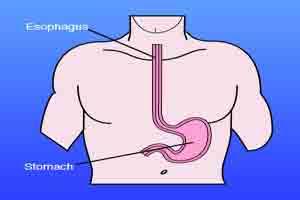- Home
- Editorial
- News
- Practice Guidelines
- Anesthesiology Guidelines
- Cancer Guidelines
- Cardiac Sciences Guidelines
- Critical Care Guidelines
- Dentistry Guidelines
- Dermatology Guidelines
- Diabetes and Endo Guidelines
- Diagnostics Guidelines
- ENT Guidelines
- Featured Practice Guidelines
- Gastroenterology Guidelines
- Geriatrics Guidelines
- Medicine Guidelines
- Nephrology Guidelines
- Neurosciences Guidelines
- Obs and Gynae Guidelines
- Ophthalmology Guidelines
- Orthopaedics Guidelines
- Paediatrics Guidelines
- Psychiatry Guidelines
- Pulmonology Guidelines
- Radiology Guidelines
- Surgery Guidelines
- Urology Guidelines
Rare surgery in a child with esophageal atresia by KGMU Doctors

A child born without esophagus-the food pipe connecting the mouth to the stomach - is quite rare and surprising to note.Doctors at KGMU, Lucknow miraculously performed a surgery using Kimura technique to treat a child born with incomplete food pipe.
The case reported is of a six-year-old child born with esophageal atresia, a rare birth defect in which a baby is born without a part of the tube that connects the mouth to the stomach , became the first Indian child to be operated by Kimura technique.
Read Also: KGMC doctors remove pen tip from posterior urethra of a boy
The child who had been living only on milk was seen eating chocolate at the King George’s Medical University (KGMU).
Head of the pediatric surgery department at KGMU Prof SN Kureel said to Hindustan Times: “This is the first Indian child to be operated upon for the rare disease with Kimura technique. He can now have a normal life”.
Traditionally, a different method is used to treat the rare disease but it has its own limitations. Two pipes are inserted in the body near the chest and stomach. The first pipe near the chest helps in draining out saliva from the mouth while the other is used to feed the child. This continues for 3-4 years after which the surgeons conduct an operation and make an artificial food pipe by extracting a portion of stomach or colon from the child’s body.
Read Also: Lucknow: Oral Mucosa Skin used for vaginal reconstruction in a rare surgery at KGMU
Prof Kureel applied to tissue engineering and helped original esophagus to grow naturally. This was done by cutting the uppermost layer of the esophagus and allowing it to regenerate in length.
The procedure was done by the doctors for four times in 2012, hours after the childbirth then again in 2013, 2015 and 2017.
In each operation, the length increased by over a centimeter and now the doctors assured that it will grow naturally with age.
“It required high precision and we are happy to share that the final procedure of joining the stomach with the fully grown food pipe was done on September 6. Now, whatever the child eats goes into the stomach without any pipe,” said Prof Kureel.
The parents of the child are now in big relief and happiness.
“We were worried when the doctors told us that the food pipe was not complete. He had been living only on milk we fed on the pipe. Today we are happy to see our child eating like other children of his age,” she said.
Prof Kureel did the same and, in four attempts, got the length of the esophagus increased to match the gap in the esophagus. He repeatedly made cuts and allowed the esophagus to grow.
“The technique also demands that the food pipe made should be put under the heart chamber. This was done in the last operation,” said Dr. Archika Gupta, who was a part of the team which conducted the surgery.
Facts about tissue Engineering:
The esophagus has four layers – submucosa, mucosa, muscle, and fascia. In 1994, M Kimura of Japan gave the idea that if the fascia layer of the esophagus is dissected without disturbing the muscle, the esophagus can grow in length and by repeating this, the length can grow equal to the gap in the body.

Disclaimer: This site is primarily intended for healthcare professionals. Any content/information on this website does not replace the advice of medical and/or health professionals and should not be construed as medical/diagnostic advice/endorsement or prescription. Use of this site is subject to our terms of use, privacy policy, advertisement policy. © 2020 Minerva Medical Treatment Pvt Ltd